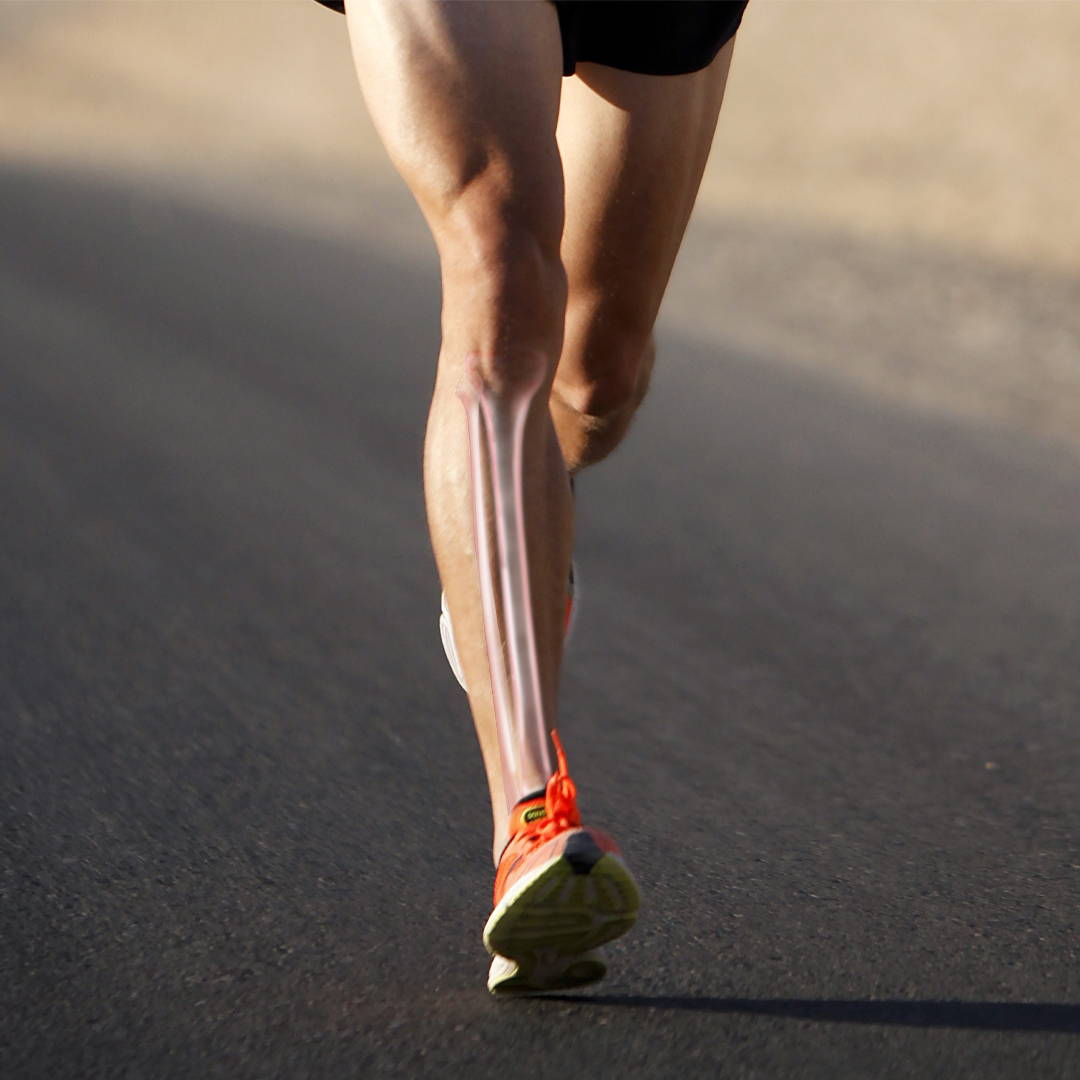
Shin splints are incredibly common in runners affecting the tibia (shin bone)
Every runner has heard of or has had shin splints. Firstly, navigating the numerous injuries that are encompassed under the shin splints term is essential. For more on that, please read this article.
The injury most commonly associated with shin splints, medial tibial stress syndrome, is what we will talk about in this article. The pain associated with this injury should appear on the inside border of the shin, along the third closest to the ankle.
One of a few injuries that make up the top tier of frequent injuries, others of similar status include runners knee, plantar fasciitis and Achilles tendinopathy. From our own research with 280 runners, the most common injury was medial tibial stress syndrome (MTSS) (46 runners suffering from the injury), followed by plantar fasciitis (38), knee pain (33) and Achilles tendonitis (32).
Despite being so common, do we really know what is happening? The answer: yes and kind of?
Two common theories attempt to explain what is happening with this injury: excessive bone loading and fascial traction. Let's break them down!
Bone Loading
Have you ever noticed that, as people get older and their teeth fall out, their jaws also get smaller? As they begin to reduce the load through their jaw, their bones respond to this lower activity level by shrinking as they chew less. This also happens in reverse. The more you load up bone, the stronger it becomes; it adapts to the new loads. Yes, like muscles in the gym.
So, can you apply as much load as you like and expect your bones to figure it out? No, unfortunately not. A common issue in newbie runners is the notion of doing too much too soon. You feel fantastic; yes, keep going!; keep pushing!; here is the high!; oh, sh*t; I am in pain.
If you excessively load your shinbone (tibia, hence "tibial stress syndrome"), it results in tissue breakdown. Your body can't quite keep up. The first thing to occur is the outer layer of the shin bone, the periosteum, gets inflamed, which is painful. After that, internal bone responses arise, resulting in stress fractures if you continue to overload the shin bone.
That is my attempt to explain the bone loading theory non-clinically. How did I do?
Soft-Tissue (Fascial Traction)
As early as 1958, the term "shin splints" was linked to a traction injury of the lower leg musculature. The muscles connect to the shin bone via the fascia - a continuous tissue with the periosteum.
The idea here also stems from the too much too soon problem highlighted above. But, this time, the muscles are undergoing too much load, resulting in excessing pulling of the fascia. Again, as the fascia is continuous with the periosteum, this results in pain and inflammation.
Have you ever noticed how downhill mountain bikes have springs and road bikes don't? Imagine going an offroad track on that road bike with no suspension. Ouch. All the forces from the track will be transferred to the bikes frame (and your derriere). Springs help absorb these forces saving the frame and your backside.
Similarly, the calf muscles surrounding your shinbone are your shock absorbers. They need to be strong enough to withstand the loads you put through them when running. One of them, the soleus, takes up to 8 times body weight every stride! This works in favour of both theories; we need to counteract loads with the muscles where possible and not leave the bones to handle it, and those muscles need to be strong enough not to get overworked.
So, which one is it?
Now to the fun part. Is medial tibial stress syndrome due to excessive bone loading or fascial traction? The answer: it's one or the other or a combination of both (insert smiley and wink).
The reality is, the research is not concretely conclusive on this. But, we can take lessons from the commonalities and known effective treatment strategies. So, would you rather get caught up on exactly what is going wrong, or would you prefer to get better?
The commonalities/takeaways
Too much too soon! Make sure you work with a running coach on developing a running program suitable to your skill level. Some physical therapists (physiotherapists), podiatrists and physicians are also capable of helping you here.
If your calf muscles aren't strong enough, you're in trouble. Please make sure you work with someone on identifying weaknesses and addressing them. Then, build a strong suspension kit that handles what is thrown its way.
Good luck!
Related Articles:
About the author:
Ben Lindsay is the Managing Director and engineer behind the Solushin medical device. A former national medalist swimmer, Ben aspires to learn from physicians, physiotherapists and podiatrists so he can develop tools to improve the quality of care for their patients.
